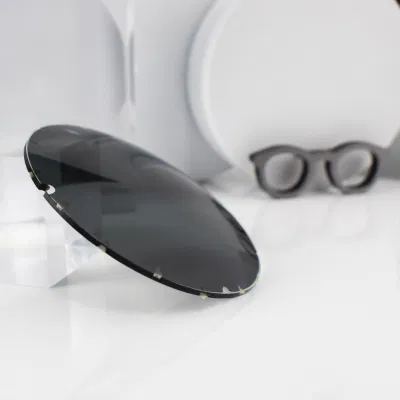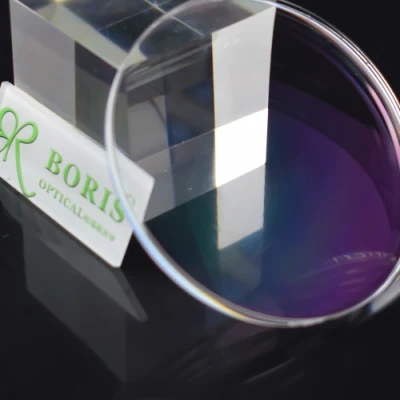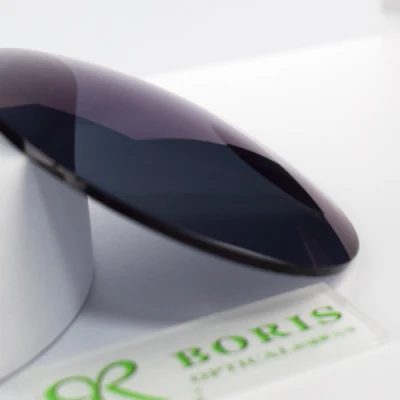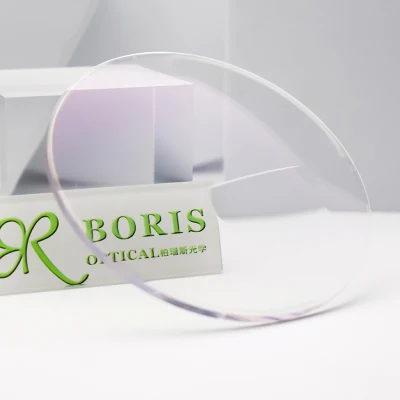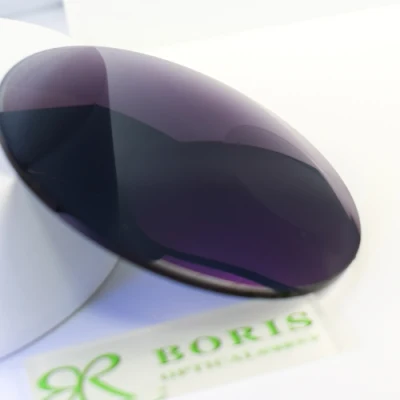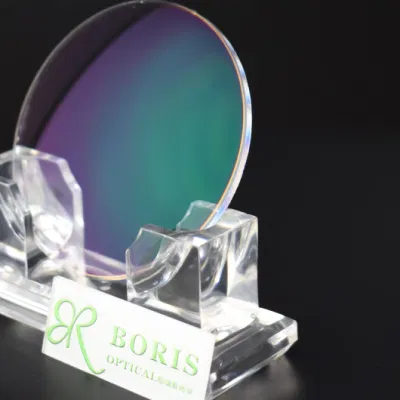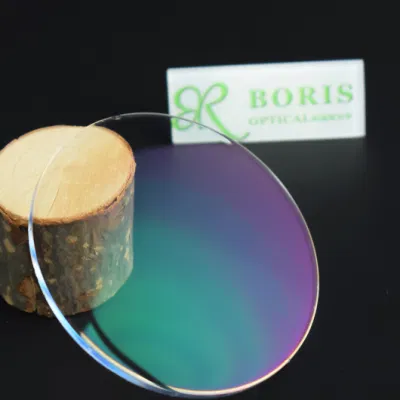Basic Info.
Model NO.
RAY-KFL1226-5#
Type
Concave Lens
Transmittance
>95%
Shape
Laminated Lenses
Material
Optical Glass
Lenses Color
Clear
Certification
RoHS, ISO9001, CE
Customized
Customized
Coating
HMC
Transport Package
Wooden Box
Specification
Based on size
Trademark
RAYTEK
Origin
Made in China
Production Capacity
50000PCS/Year
Packaging & Delivery
Package Size
90.00cm * 90.00cm * 90.00cm
Package Gross Weight
50.000kg
Lead Time
60 days (1 - 100 Pieces)
To be negotiated ( > 100 Pieces)
To be negotiated ( > 100 Pieces)
Product Description
Product type:
Ф12.70 f15.00 IR1
Ф12.70 f20.00 IR1
Ф12.70 f40.00 IR1
Ф25.40 f25.40 IR1
Ф25.40 f50.00 IR1
Ф25.40 f75.00 IR1
Ф25.40 f100.00 IR1
Ф25.40 f200.00 IR1
Product characteristics:
Spherical single lenses are a good choice for many applications where aberration is not very important, as they are simple and inexpensive lens types. For simple applications, standard flat convex lenses, flat concave lenses, biconvex lenses, and biconvex lenses are sufficient. To achieve better performance, the external lens has been optimized to reduce aberration while still maintaining a spherical surface. Using multiple lens elements within a composite optical system can achieve more performance improvements. These multi element optical systems typically utilize crescent shaped lenses, although they are rarely used alone. For demanding applications, the performance of spherical single lenses will not be as good as that of achromatic lenses (for both broadband and monochromatic light sources) or spherical lenses (for monochromatic light sources). For more details on other types of lenses, please refer to the labels for achromatic and aspheric lenses.
Standard single lens
Multiple basic single lens designs: planar convex lens, biconvex lens, planar concave lens, and biconvex lens. Each of these lenses is suitable for different applications. Convex and biconvex lenses are positive lenses (i.e., they have a positive focal length) that focus collimated light to a focal point, while concave and biconvex lenses are negative lenses that can cause collimated light to diverge. The shape of each single lens minimizes aberration based on a certain conjugate ratio, which is defined as the ratio of object distance to image distance (referred to as conjugate distance).
Positive lens:
Planoconvex lens
A planar convex lens is suitable for situations where one conjugate distance is more than five times that of another conjugate distance. The performance of this lens shape is suitable for situations with infinite conjugation ratio (focusing collimation light or point light source collimation).
Biconvex lens
A biconvex lens is suitable for situations where one conjugate distance is 0.2 to 5 times the conjugate distance of another. The performance of this lens shape is suitable for situations where the object distance and image distance are the same.
Negative lens:
Flat concave lens
Flat concave lenses are suitable for situations where one conjugate distance is more than five times that of another conjugate distance. They introduce negative spherical aberrations and can be used to balance the spherical aberrations introduced by a single lens with positive focal length.
Biconcave lens
Double concave lenses have a negative focal length and are typically used to increase the divergence of aggregated light.
Aberration reduction
In order to minimize spherical aberration, the lens should be placed with the side with greater curvature facing further towards the common major point. For flat convex and flat concave lenses used in infinite co ratio, this means that the surface should face the collimated beam (as shown in the above figure). The number of lenses is defined as the focal length divided by the aperture diameter, which has a significant impact on the degree of aberration. A smaller lens ("fast" lens) introduces significantly more aberrations than a larger lens ("slow" lens). The shape of the lens becomes very important when it is below about f/10 and should be considered as a substitute for spherical single lenses and other lenses below about f/2 (such as achromatic lenses and aspherical lenses).
Appearance lens
The shape lens is designed to minimize spherical and coma aberrations (caused by light not on the optical axis), while still utilizing the spherical surface to form the lens. Utilizing a spherical design makes it easier to manufacture external lenses than aspherical lenses (as described on the aspherical lens label), reducing costs. Each side of the external lens is polished to have different curvature radii, providing better performance for spherical single lenses. For small diameter input beams, the external lens even has diffraction performance. These lenses are typically used in high-power applications where achromatic glued lenses cannot be used.
Curved Moon Lens and Multi Element Lens System
Moonlight lenses are typically used in multi element optical systems to modify the focal length without introducing significant spherical aberrations. The optical performance of a multi element lens system is usually significantly better than that of a single lens. In these systems, the aberration introduced by one element can be corrected by subsequent optical elements. These lenses have a convex and a concave surface, and they can be positive or negative lenses.
Crescent lens
Meniscus lens
A crescent lens is usually used together with another lens in composite optical assemblies. When used in this structure, a regular meniscus lens will shorten the focal length, increase the numerical aperture (NA) of the system, and will not introduce significant spherical aberrations.
Negative meniscus lens
Negative meniscus lenses are usually used together with another lens in composite optical assemblies. When used in this structure, the negative meniscus lens increases the focal length and reduces the numerical aperture (NA) of the system.
Achromatic lens
Achromatic lenses are a good choice for any demanding optical application, as they have substantially better performance than spherical single lenses. Achromatic doublet lenses are sufficient for most applications of infinite conjugation, and doublet lens pairs are an ideal choice for finite conjugation. However, the adhesive used in these optical components reduces their damage threshold and limits their availability in high-power systems. Double lens with air separation is an ideal choice for high-power applications, as their damage threshold is greater than that of achromatic glued lenses. In addition, a double lens with air separation has two more design variables than a double glued lens, as the inner surface of the lens does not need to have the same curvature. These additional variables make the performance of air spaced dual lenses far superior to that of double bonded lenses in terms of transmitted wavefront error, spot size, and aberration. However, air separated dual lenses are also more expensive than double bonded lenses.
Achromatic triple lenses can be designed for both finite and infinite conjugation ratios. In the middle of these triple lenses is a low refractive index optical element, which is glued between two identical high refractive index external optical elements. They can correct axial and transverse color differences, and their symmetrical design has better performance than glued double lens.
Double glued lens
Achromatic double glued lenses have more advantages than simple single lenses, including reduced color difference, improved off axis performance, and smaller focal spot. These dual lenses have a positive focal length and are optimized for infinite conjugate ratios.
Air gap double lens
The performance of air separated dual lens is better than that of double glued lens because their lenses are separate. These optical components are ideal choices for high-power applications because their damage threshold is greater than that of double bonded lenses. These dual lenses have a positive focal length and are optimized for infinite conjugation ratios.
Double lens pair
Achromatic dual lens pairs have the advantages of achromatic lenses and are optimized for finite conjugation. These lens pairs are ideal choices for image relay and amplification systems.
Achromatic triple lens
Achromatic triple lenses perform better than achromatic double lenses. An achromatic triple lens is a simple lens that can correct all major color differences. The Steinheil triple lens is optimized for finite conjugation ratio, while the Hastings triple lens is optimized for infinite conjugation ratio.

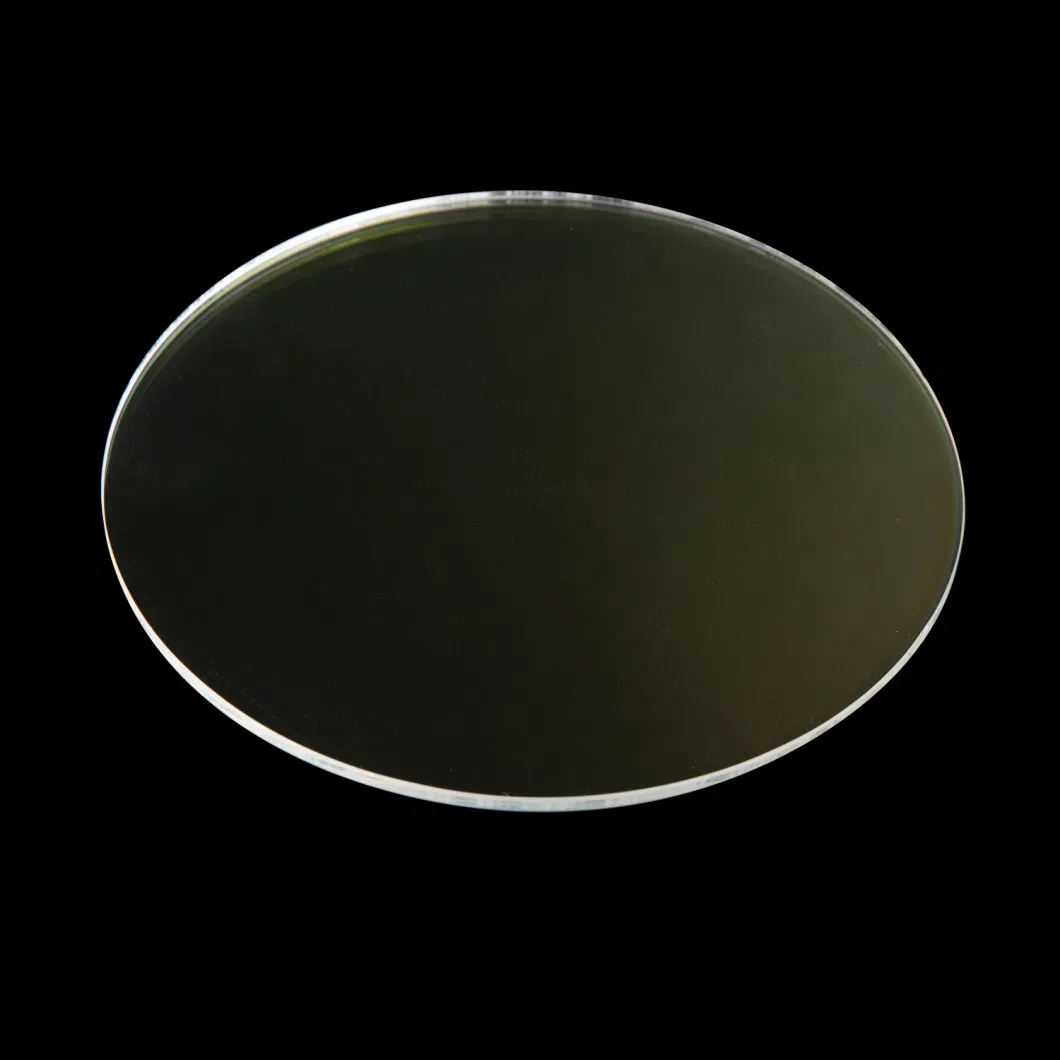




Ф12.70 f15.00 IR1
Ф12.70 f20.00 IR1
Ф12.70 f40.00 IR1
Ф25.40 f25.40 IR1
Ф25.40 f50.00 IR1
Ф25.40 f75.00 IR1
Ф25.40 f100.00 IR1
Ф25.40 f200.00 IR1
Product characteristics:
Material: Calcium fluoride single crystal
Design wavelength: 587.6nm
Diameter error:+0.0/-0.1mm
Center thickness error: soil 0.1mm
Focal length error: ± 1%
Lens centering error: less than 3 minutes
Surface smoothness: 3-4 levels
Chamfer: 0.2mmX45 °
IR1 Antireflective Membrane @ 3~5um

Optical lens:
Spherical single lens Design wavelength: 587.6nm
Diameter error:+0.0/-0.1mm
Center thickness error: soil 0.1mm
Focal length error: ± 1%
Lens centering error: less than 3 minutes
Surface smoothness: 3-4 levels
Chamfer: 0.2mmX45 °
IR1 Antireflective Membrane @ 3~5um
Optical lens:
Spherical single lenses are a good choice for many applications where aberration is not very important, as they are simple and inexpensive lens types. For simple applications, standard flat convex lenses, flat concave lenses, biconvex lenses, and biconvex lenses are sufficient. To achieve better performance, the external lens has been optimized to reduce aberration while still maintaining a spherical surface. Using multiple lens elements within a composite optical system can achieve more performance improvements. These multi element optical systems typically utilize crescent shaped lenses, although they are rarely used alone. For demanding applications, the performance of spherical single lenses will not be as good as that of achromatic lenses (for both broadband and monochromatic light sources) or spherical lenses (for monochromatic light sources). For more details on other types of lenses, please refer to the labels for achromatic and aspheric lenses.
Standard single lens
Multiple basic single lens designs: planar convex lens, biconvex lens, planar concave lens, and biconvex lens. Each of these lenses is suitable for different applications. Convex and biconvex lenses are positive lenses (i.e., they have a positive focal length) that focus collimated light to a focal point, while concave and biconvex lenses are negative lenses that can cause collimated light to diverge. The shape of each single lens minimizes aberration based on a certain conjugate ratio, which is defined as the ratio of object distance to image distance (referred to as conjugate distance).
Positive lens:
Planoconvex lens
A planar convex lens is suitable for situations where one conjugate distance is more than five times that of another conjugate distance. The performance of this lens shape is suitable for situations with infinite conjugation ratio (focusing collimation light or point light source collimation).
Biconvex lens
A biconvex lens is suitable for situations where one conjugate distance is 0.2 to 5 times the conjugate distance of another. The performance of this lens shape is suitable for situations where the object distance and image distance are the same.
Negative lens:
Flat concave lens
Flat concave lenses are suitable for situations where one conjugate distance is more than five times that of another conjugate distance. They introduce negative spherical aberrations and can be used to balance the spherical aberrations introduced by a single lens with positive focal length.
Biconcave lens
Double concave lenses have a negative focal length and are typically used to increase the divergence of aggregated light.
Aberration reduction
In order to minimize spherical aberration, the lens should be placed with the side with greater curvature facing further towards the common major point. For flat convex and flat concave lenses used in infinite co ratio, this means that the surface should face the collimated beam (as shown in the above figure). The number of lenses is defined as the focal length divided by the aperture diameter, which has a significant impact on the degree of aberration. A smaller lens ("fast" lens) introduces significantly more aberrations than a larger lens ("slow" lens). The shape of the lens becomes very important when it is below about f/10 and should be considered as a substitute for spherical single lenses and other lenses below about f/2 (such as achromatic lenses and aspherical lenses).
Appearance lens
The shape lens is designed to minimize spherical and coma aberrations (caused by light not on the optical axis), while still utilizing the spherical surface to form the lens. Utilizing a spherical design makes it easier to manufacture external lenses than aspherical lenses (as described on the aspherical lens label), reducing costs. Each side of the external lens is polished to have different curvature radii, providing better performance for spherical single lenses. For small diameter input beams, the external lens even has diffraction performance. These lenses are typically used in high-power applications where achromatic glued lenses cannot be used.
Curved Moon Lens and Multi Element Lens System
Moonlight lenses are typically used in multi element optical systems to modify the focal length without introducing significant spherical aberrations. The optical performance of a multi element lens system is usually significantly better than that of a single lens. In these systems, the aberration introduced by one element can be corrected by subsequent optical elements. These lenses have a convex and a concave surface, and they can be positive or negative lenses.
Crescent lens
Meniscus lens
A crescent lens is usually used together with another lens in composite optical assemblies. When used in this structure, a regular meniscus lens will shorten the focal length, increase the numerical aperture (NA) of the system, and will not introduce significant spherical aberrations.
Negative meniscus lens
Negative meniscus lenses are usually used together with another lens in composite optical assemblies. When used in this structure, the negative meniscus lens increases the focal length and reduces the numerical aperture (NA) of the system.
Achromatic lens
Achromatic lenses are a good choice for any demanding optical application, as they have substantially better performance than spherical single lenses. Achromatic doublet lenses are sufficient for most applications of infinite conjugation, and doublet lens pairs are an ideal choice for finite conjugation. However, the adhesive used in these optical components reduces their damage threshold and limits their availability in high-power systems. Double lens with air separation is an ideal choice for high-power applications, as their damage threshold is greater than that of achromatic glued lenses. In addition, a double lens with air separation has two more design variables than a double glued lens, as the inner surface of the lens does not need to have the same curvature. These additional variables make the performance of air spaced dual lenses far superior to that of double bonded lenses in terms of transmitted wavefront error, spot size, and aberration. However, air separated dual lenses are also more expensive than double bonded lenses.
Achromatic triple lenses can be designed for both finite and infinite conjugation ratios. In the middle of these triple lenses is a low refractive index optical element, which is glued between two identical high refractive index external optical elements. They can correct axial and transverse color differences, and their symmetrical design has better performance than glued double lens.
Double glued lens
Achromatic double glued lenses have more advantages than simple single lenses, including reduced color difference, improved off axis performance, and smaller focal spot. These dual lenses have a positive focal length and are optimized for infinite conjugate ratios.
Air gap double lens
The performance of air separated dual lens is better than that of double glued lens because their lenses are separate. These optical components are ideal choices for high-power applications because their damage threshold is greater than that of double bonded lenses. These dual lenses have a positive focal length and are optimized for infinite conjugation ratios.
Double lens pair
Achromatic dual lens pairs have the advantages of achromatic lenses and are optimized for finite conjugation. These lens pairs are ideal choices for image relay and amplification systems.
Achromatic triple lens
Achromatic triple lenses perform better than achromatic double lenses. An achromatic triple lens is a simple lens that can correct all major color differences. The Steinheil triple lens is optimized for finite conjugation ratio, while the Hastings triple lens is optimized for infinite conjugation ratio.



